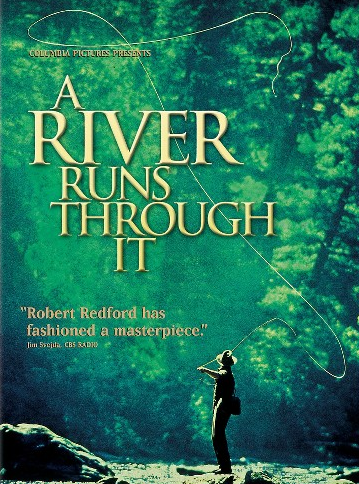This fall, the film iteration of Norman Maclean’s “A River Runs Through It” turns 25. The film made fly fishing trendy (too trendy, some would say), and it helped put Montana on the fly fishing map. While the film and the book centered on the Blackfoot River near Missoula, the film’s fishing was actually shot on the Gallatin River, southwest of Bozeman. Both rivers, thanks to Maclean and filmmaker Robert Redford, now occupy storied status among fly fishers.
But making the movie wasn’t simple. Experts brought in to teach Brad Pitt and Craig Sheffer how to fly fish struggled with the newbie anglers, knowing that, if the casting and fishing didn’t appear authentic, the fly fishing community wouldn’t embrace the film. John Bailey, son of famous fly fisher Dan Bailey, was in charge of teaching the actors to cast appropriately, and, for all of us who love the story, we’re glad he did.
While we all celebrate the film that made fly fishing famous, biologists in Colorado are working to save the fish that might help ensure a future for fly fishing in the South Platte River drainage. Endangered greenback cutthroat trout live in precious few watersheds in Colorado, and the brood stock for the once-believed-to-be-extinct cutthroat trout lives in a small stream west of Colorado Springs. Biologists visit the stream each spring to collect eggs and milt for species propogation.
The fertilized eggs are reared in the Leadville National Fish Hatchery at the top of the Arkansas River drainage, and the fingerling trout are then released into their native range—small lakes and headwater streams in the South Platte River drainage. It’s exhausting work, but it’s protecting Colorado’s state fish from going the way of other long-lost cutthroat trout. Ever hear of the yellowfin cutthroat trout?
Finally, if you’re an adventurous angler—or just someone who likes great storytelling—how about a trip to remote Uttarakhand, an Indian province that borders Tibet and Nepal to fly fish for mahseer? These monstrous relatives to carp can grow to nine feet and they live in rugged watersheds also occupied by tigers and Indian elephants. It’s a pretty extreme trip to catch these unique fish on the fly, and one that has suddenly moved up my list of dream destinations.
Who else wants to go?
— Chris Hunt



